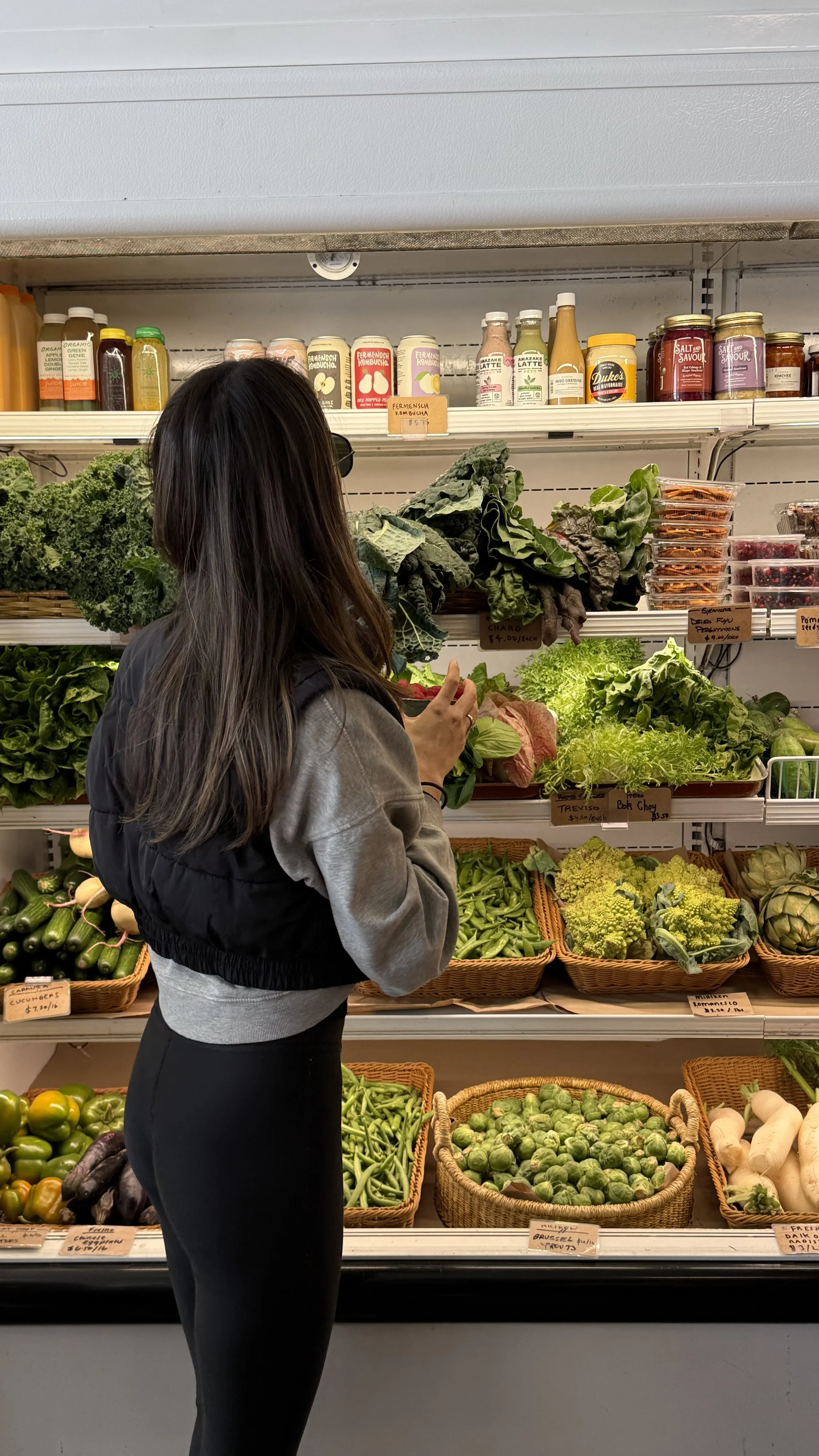The Wellness Industry Wants You to Think Ultra-Processed Food Is Healthy (Here's How to Tell the Difference)
That $5 protein bar with 47 ingredients? The wellness industry is counting on you not knowing the difference between food and food products.
Ultra-processed foods marketed as healthy contain isolated nutrients, synthetic additives, emulsifiers that damage gut bacteria, and create blood sugar dysregulation—even when labeled organic, plant-based, or clean. The difference between minimal processing (cooking, fermenting, grinding whole foods) and ultra-processing (isolates, dozens of synthetic ingredients, chemical preservation) determines how your body responds. Learning to identify ultra-processed products behind wellness marketing protects your health and saves money.
the lie
You've been trying so hard to eat right.
Reading every label. Paying extra for "organic." Trusting that "plant-based" meant healthy. Choosing the $5 protein bar over the $2 one because surely that price difference means quality.
Standing in the wellness aisle for ten minutes trying to figure out if cassava chips with 23 ingredients are better than regular chips. If the "clean" protein bar is worth it. If the bottled green smoothie counts as eating vegetables.
Your body gave you signals. The crash an hour after the "healthy" bar. The bloating after the plant-based burger. The brain fog that settled in despite your clean eating. The constant hunger even though you're eating all day. The exhaustion that never quite lifts.
You thought you were doing something wrong. Needed to try harder. Read more labels. Buy different products.
But the confusion wasn't your failing. They designed it that way.
The wellness industry has been selling you ultra-processed products disguised as health food—and charging you triple for the privilege.
the rebrand
Industrial food companies had a problem: you were getting smarter about avoiding processed food.
Their solution? Rebrand it.
Slap "organic," "plant-based," "clean," "whole30 approved" on products with 40 ingredients and sell them in the wellness aisle instead of the snack aisle. Same ultra-processing. Different packaging. Higher price.
They knew you'd trust those words. They knew "natural flavors" sounds better than "chemical additives" even when it's the same thing. They knew protein isolate sounds healthier than "isolated protein stripped from whole food and mixed with synthetic vitamins."
They knew confusion keeps you buying. Keeps you second-guessing. Keeps you reaching for packaged products instead of actual food.
As long as you can't tell the difference between minimally processed whole foods and ultra-processed products with health claims, they can sell you both at premium prices.
And they've been very, very good at making sure you can't tell the difference.
what processing actually means
Processing itself isn't the problem. Humans have processed food for thousands of years.
Minimal processing keeps food recognizable. It uses simple methods that your body understands:
Cooking. Fermenting. Grinding grain into flour. Drying fruit. Making cheese from milk. Baking bread from flour, water, salt, and time. Pressing nuts into butter. Smoking or curing meat.
These methods preserve food, make nutrients more available, or simply make food edible. Your body knows what to do with foods processed this way because we've been doing it for millennia.
Ultra-processing breaks food apart and rebuilds it into something else entirely:
Isolating nutrients from their original sources—protein isolate, fiber isolate. Stripping natural vitamins, then adding synthetic versions back. Using emulsifiers, stabilizers, thickeners to create textures that don't exist in nature. Adding "natural flavors" (an unregulated term that can include dozens of chemical compounds). Engineering products that sit on shelves for years. Combining ingredients that would never exist together outside a lab.
The difference isn't philosophical. Your body responds completely differently to each.
what your body knows
A protein bar made from dates, nuts, and egg whites? Your body recognizes it. Whole foods pressed together. You feel satisfied. Energy stays steady. Hunger doesn't return in an hour.
A protein bar with pea protein isolate, chicory root fiber, natural flavors, stevia, and 15 other ingredients? Your body gets confused. Isolated nutrients without their natural partners. Synthetic sweeteners that trigger cravings without satisfying them. You're hungry again in an hour. Energy crashes. Something feels off.
Both live in the same aisle. Both claim to be healthy. One your body treats as food. The other as chemistry.
Your gut expects fiber with sugar. Protein with the fat and minerals that originally came with it. Nutrients in their natural forms with the compounds that help absorption.
Ultra-processing strips these relationships apart. Protein isolate without its natural fats? Your body absorbs it poorly. Fiber isolate added to products? Doesn't work like fiber in whole foods. Synthetic vitamins added back after processing? Your body treats them differently than vitamins in actual food.
Research shows women eating whole food diets have significantly more diverse gut bacteria than women eating ultra-processed diets. More diverse bacteria means better digestion, stronger immunity, more stable moods, clearer skin.
The emulsifiers damage your gut lining. The isolated ingredients confuse your hunger signals. The synthetic additives trigger inflammation your body can't quite resolve.
You feel this. The difference between how you feel after eggs and vegetables versus the "healthy" breakfast bar. After a real meal versus the bottled smoothie. After food versus food products.
Your body has been trying to tell you.
what they're hiding
Learn to spot ultra-processed products behind the health claims:
More than 5-7 ingredients - especially ingredients you can't pronounce. Food doesn't need paragraphs of ingredients.
Anything with "isolate" - protein isolate, soy isolate, pea isolate, fiber isolate. This means they stripped nutrients from whole food sources and reassembled them.
Lab-sounding ingredients - methylcellulose, carrageenan, maltodextrin, xanthan gum, guar gum. If it sounds like chemistry class, it is.
"Natural flavors" - an unregulated term that can include dozens of compounds. Real food tastes like itself.
Artificial sweeteners - sucralose, aspartame, acesulfame potassium. These confuse your body's hunger signals.
"Fortified" or "enriched" - means nutrients were stripped during processing, then synthetic versions added back. Like breaking your arm and putting a cast on it instead of just not breaking it.
Health claims covering the package - if it needs to tell you it's healthy in five different ways, it's probably not food.
Shelf-stable for months - without refrigeration (except naturally preserved foods like dried goods or fermented foods). Food should eventually rot. If it doesn't, something's wrong.
what you’ll notice
Real food doesn't need marketing:
Short ingredient list - usually 1-5 items that you recognize as actual foods.
Would rot or ferment if left out - except dried goods, fermented foods, or foods preserved through traditional methods.
You can picture where each ingredient came from - the plant, the animal, the ground, the tree.
No health claims needed - it's obviously food.
Made recently or requires refrigeration - food is alive until it's not. Ultra-processed products were never quite alive to begin with.
the difference
Ultra-processed (disguised as healthy):
Protein bars with 40 ingredients including isolates and synthetic sweeteners. Bottled green juice that's been pasteurized, stripped of fiber, with added flavors. "Grain-free" crackers with cassava flour, tapioca starch, seed oils, and 15 additives. Plant-based "meat" with 20+ ingredients including isolated proteins. Protein powder with added vitamins, thickeners, artificial sweeteners. Chain smoothie bowls with protein powder, supplements, synthetic toppings.
How you feel: Hungry again in an hour. Bloated. Brain fog. Energy crashes. Never quite satisfied.
Minimally processed (actual food):
Bars made from dates, nuts, maybe coconut or egg whites. Fresh-pressed juice you drink immediately. Sourdough crackers made from flour, water, salt, culture. Actual meat, beans, or lentils. Whole foods you blend together at home. Plain yogurt with real fruit and nuts.
How you feel: Satisfied. Steady energy. Clear-headed. Actually full. Your body relaxes instead of staying on alert.
The difference isn't subtle. Your body knows.
when convenience makes sense
Sometimes you need convenience. You're traveling. The minimally processed option genuinely isn't available. You're exhausted and need something now.
That's when the protein bar makes sense. The bottled smoothie works. The packaged whatever gets you through.
Fine. That's real life.
But don't let the wellness industry convince you that's equivalent to actual food. It's emergency food. Convenience food. Better-than-gas-station-candy food.
Use it when you need it. Just know what it actually is. And stop paying premium prices for products pretending to be something they're not.
what to choose
Build meals around whole and minimally processed foods:
Eggs, meat, fish, vegetables, fruit, potatoes, rice, beans, lentils, nuts, seeds. Bread made from flour, water, salt, and time. Real cheese, plain yogurt, butter. Olive oil, coconut oil, animal fats. Dried fruit with nothing added, nuts without coatings, dark chocolate with minimal ingredients.
These don't come with health claims. They don't need them. They're food.
When you need something packaged, ask yourself:
Can you picture where each ingredient came from? Can you pronounce them? Do you recognize them as food?
If yes—probably fine. If no—probably ultra-processed.
Your body already knows the difference. You just had to learn to trust it over their marketing.
the truth
The wellness industry made billions convincing you that ultra-processed products are health foods. That protein isolates are better than actual protein. That fortified means improved. That more ingredients mean more benefits.
They made "healthy" so confusing you'd need their guidance. Need their products. Keep buying, keep second-guessing, keep paying premium prices for chemistry disguised as wellness.
Your body has been telling you the whole time. The crash. The bloating. The constant hunger. The exhaustion that rest doesn't fix. The feeling that something's off even though you're "eating clean."
That wasn't you failing. That was your body trying to tell you: this isn't food.
You're allowed to eat convenience food sometimes. You're allowed to choose the protein bar when you need it. You're allowed to not be perfect.
Just stop letting them charge you triple for ultra-processed products while convincing you it's health.
Real food doesn't need a marketing campaign. It doesn't need health claims or wellness buzzwords or influencer endorsements.
It just needs to be food. And your body knows exactly what that feels like.
Quick Reference: Is It Ultra-Processed?
Check the ingredient list:
1-5 recognizable ingredients = probably minimally processed
7+ ingredients with things you don't recognize = probably ultra-processed
Check for isolates: protein isolate, fiber isolate, soy isolate = ultra-processed
Check shelf life: Lasts for months at room temperature (except dried/fermented foods) = ultra-processed
Check health claims: Covered in wellness buzzwords = probably trying to hide ultra-processing
Check certifications: Certified Organic, Certified Glyphosate-free, these types of third-party certifications are more reliable than what the company says on its own.




